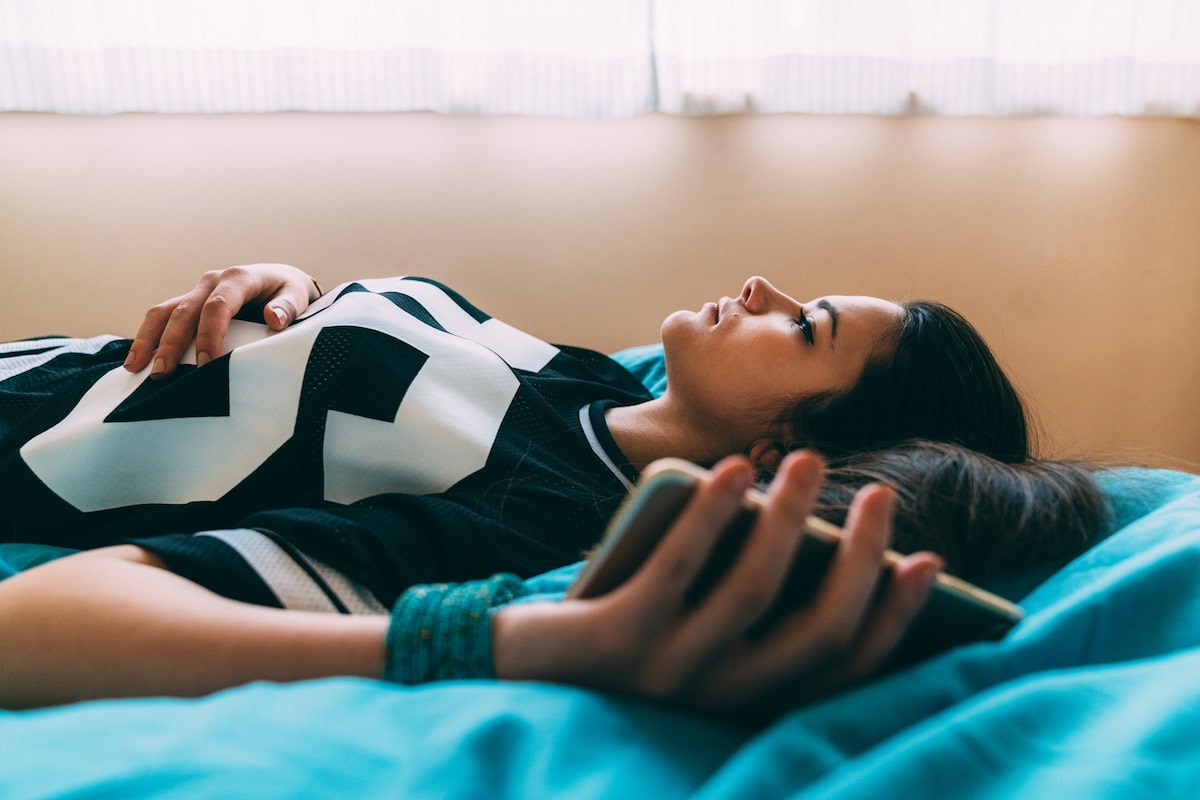<< Back
Seasonal Affective Disorder During COVID-19: How To Stop It

November 12, 2020
For many people, the end of Daylight Saving Time marks the beginning of seasonal affective disorder and its annual pattern of diminished energy and depression that can last through winter.
A winter punctuated by a COVID-19 surge could prove especially challenging for sufferers of the disorder.
“It can get pretty serious on top of these COVID restrictions,” says Dr. Laura Saunders, a psychologist at the Institute of Living, part of the Hartford HealthCare Behavioral Health Network. “It’s going to make it harder to actually connect with people.”
The significance of turning the clocks back an hour each fall (this year on Nov. 1 at 2 a.m.) is not lost on the estimated 10 million American adults who experience seasonal affective disorder. For some, the symptoms can show up as early as September.
“It’s not just the holiday blues,” says Dr. Craig Allen, a psychiatrist who is also Rushford’s medical director. “It’s not someone who has a day when they feel they don’t have the energy to do all the demanding things they do over the holidays. It’s someone who’s suffering from a clinical depression.”
This is a specific type of clinical depression, he says, that occurs only as daylight dwindles each fall and, without proper treatment, can become debilitating.
“You don’t feel like you want to do anything,” he says. “You don’t want to get out of bed, you want to eat a lot of high-carbohydrate foods, maybe become more irritable and you want to isolate. That becomes a problem if it goes on for multiple days and starts to impact the things you want to be doing and are supposed to be doing in your life.”
If you experience depressive moods in the winter but not in the summer months, seasonal affective disorder might be the reason. But it is not considered clinical depression. The National Institute of Mental Health identifies these symptoms that distinguish major depression from seasonal affective disorder:
Major Depression
- Feeling depressed most of the day, nearly every day.
- Feeling hopeless or worthless.
- Having low energy.
- Losing interest in activities you once enjoyed.
- Having problems with sleep.
- Experiencing changes in your appetite or weight.
- Feeling sluggish or agitated.
- Having difficulty concentrating.
- Having frequent thoughts of death or suicide.
Winter SAD
- Low energy.
- Hypersomnia.
- Overeating.
- Weight gain.
- Craving for carbohydrates.
- Social withdrawal.
Symptoms of the less common summer seasonal affective disorder:
- Poor appetite with associated weight loss.
- Insomnia.
- Agitation.
- Restlessness.
- Anxiety.
- Episodes of violent behavior.
Women are diagnosed with seasonal affective disorder four times more often than are men, according to the NIMH. Younger adults have a higher risk than older adults and those with existing depression or bipolar disorder may experience more problems during SAD season. A family history that includes other types of depression increases the risks of SAD.
And so does where you live: The farther from the equator, the higher the risk. One percent of Florida residents suffer from SAD, for example, compared with 9 percent of residents of New England and Alaska.
Though experts know seasonal affective disorder coincides with the reduced-daylight cycle that begins each fall, they know less about its precise cause. Research has pointed to an overproduction of the hormone melatonin. Darkness increases melatonin, which regulates sleep, but in the shorter days of winter the increased melatonin could make people with SAD feel more tired and lacking energy, often upsetting their circadian rhythm.
In one study, SAD sufferers showed abnormalities in serotonin, a neurotransmitter that affects mood. They produced 5 percent more serotonin transporter protein in the winter than in the summer.
In many cases, treatment is remarkably simple: light. A special lamp, called a light-therapy box, replicates natural daylight without the ultraviolet rays. Daily exposure to this type of light effectively tricks the brain into thinking, perhaps, that’s maybe it’s really not late fall or winter. The additional “sunlight” effectively regulates brain chemicals associated with mood and sleep.
“The light rays get into the back of the eyes, the retina, which is part of the nervous system that stimulates the chemicals in the brain that make you feel better,” says Dr. Allen. “Up to 85 percent of people feel better.”
Choose an appropriate light box with the help of your physician. “It’s passive,” says Dr. Allen, “but there can be some side effects from light therapy like making you irritable.” Cognitive behavioral therapy, effective with various types of depression and anxiety disorders, can also help. Some doctors recommend antidepressants.
“The trick is,” says Dr. Allen, “if you really do have seasonal affective disorder, you should see a professional because before it begins so you can start the treatment, whether it’s a light box or cognitive behavioral therapy, [next year] in September.”
What else you can do:
- Exercise regularly. It’s good for any type of exercise.
- Get some sunlight. A midday walk gives you the benefits of both daylight and exercise.
- Don’t overdo it. Stay organized and don’t stress-out through overwork.
- Maintain a regular sleep cycle and try to get close to 8 hours of sleep each night. Regulating your body rhythms helps manage seasonal affective disorder symptoms.
- Watch your diet. Eating well — avoid those high-carbohydrate foods — can help diminish depression and anxiety at any time of year.
“I do think there’s nothing better than natural light and getting yourself outside,” says Dr. Saunders, “but as it gets colder and colder, people are less willing to do that. But it is sometimes about bundling up and making yourself go out there because it’s good medicine for you to go outside.”